Unveiling Karnataka’s hidden gems, Aihole and Pattadakal, ancient towns whispering tales of India’s architectural heritage. Often called the “Cradle of Indian Architecture,” Aihole boasts intricate temples, while Pattadakal, a UNESCO World Heritage Site, stuns with majestic monuments. Embark on a journey through time, marvel at artistic brilliance, and delve into Karnataka’s cultural mosaic. Whether you’re a history buff, architecture enthusiast, or serenity seeker, prepare to be captivated by every stone’s story and every carving’s ancient wisdom.
How to reach:
Airports: The nearest airports are Belgaum (IXG) at 180 km and Hubli (HBX) at 190 km. Taxis and buses connect these airports to Aihole and Pattadakal.
Trains: Take a train to Badami station, 14 km away. Well-connected by rail, Badami offers onward travel by taxi or local bus.
Road Trip: Enjoy the scenic countryside by road. State-run buses and taxis connect Aihole and Pattadakal to major cities like Bangalore, Hubli, and Belgaum.
Getting Around: Once you arrive, explore with ease using auto-rickshaws, cycle rickshaws, or taxis. Guided tours can also be arranged for a deeper understanding of the historical significance of these ancient sites.
Best time to visit:
Winters (October to February): This is the prime time to visit Aihole and Pattadakal. Temperatures hover between 15°C and 25°C, creating ideal conditions for sightseeing. Explore the temples and monuments comfortably without the scorching sun or stifling humidity. Clear skies and pleasant weather enhance your experience, allowing for stunning photographs that capture the architectural brilliance.
Post-Monsoon (September to November): While winter reigns supreme, the post-monsoon season offers an alternative. Lush greenery paints the surroundings after the rains, creating a picturesque backdrop for exploration. However, be mindful that occasional showers might occur.
Summer (Avoid – March to May): The scorching summer months (March to May) are best avoided due to high temperatures and humidity, making outdoor exploration uncomfortable.
Attractions:
Aihole Attractions:
Durga Temple:
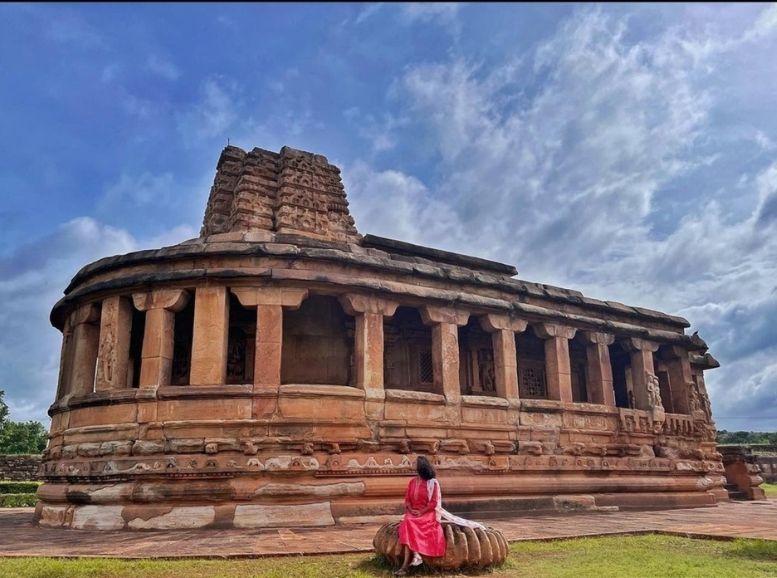
Aihole’s Durga Temple, a 7th-century marvel, stands as a testament to the Chalukyan era’s architectural brilliance. Unlike other temples, its unique apsidal shape resembles a Buddhist chaitya hall, making it a true standout. The outer walls are a canvas of intricate carvings showcasing a fascinating array of deities, mythical creatures, and scenes straight from Hindu epics. Step inside the sanctum to find a revered Shiva Lingam. The pillared hall boasts exquisitely sculpted columns and ceiling panels, further enriching the visual experience. The Durga Temple is an architectural gem, a must-visit for anyone seeking a glimpse into the artistic prowess of the Chalukyan era.
Ravana Phadi Cave Temple:
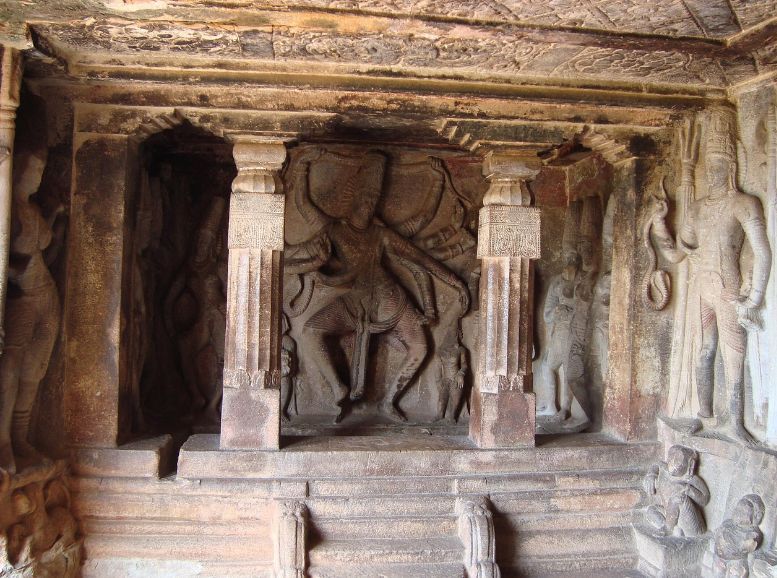
Carved directly from the natural rock face, the Ravana Phadi Cave Temple is an ancient sanctuary dedicated to Lord Shiva. Dating back to the 6th century, it’s a treasure trove of exquisite carvings depicting scenes from the epic Ramayana, including the dramatic abduction of Sita by Ravana. The temple’s facade is adorned with intricate reliefs featuring gods, goddesses, and celestial beings, a testament to the exceptional craftsmanship of bygone artisans. The tranquility of the cave temple, combined with its historical significance, creates a truly captivating experience for history buffs and devotees alike.
Lad Khan Temple:
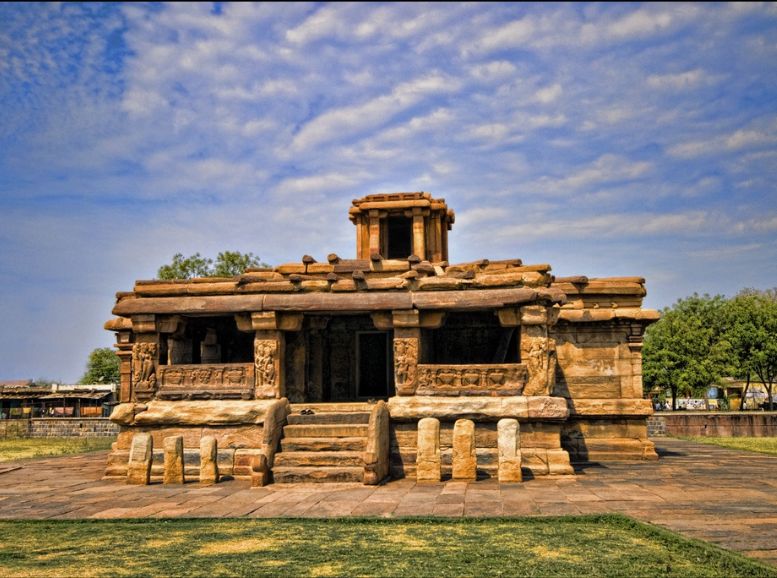
A journey through time awaits at the Lad Khan Temple, believed to be one of Aihole’s oldest structures. Dating back to the 5th century, this architectural marvel showcases a fascinating blend of Nagara and Dravidian styles. The sanctum resembles a Dravidian vimana, a towering structure characteristic of South Indian temples, while the mandapa, or pillared hall, boasts elegant Nagara-style pillars, known for their curvilinear form. Dedicated to Lord Shiva, the temple is adorned with intricate carvings depicting a pantheon of deities, goddesses, and mythological scenes, offering a glimpse into the artistic sensibilities of the era. Lad Khan Temple’s architectural grandeur and historical significance make it a must-visit landmark within Aihole’s captivating temple complex.
The Meguti Jain Temple:
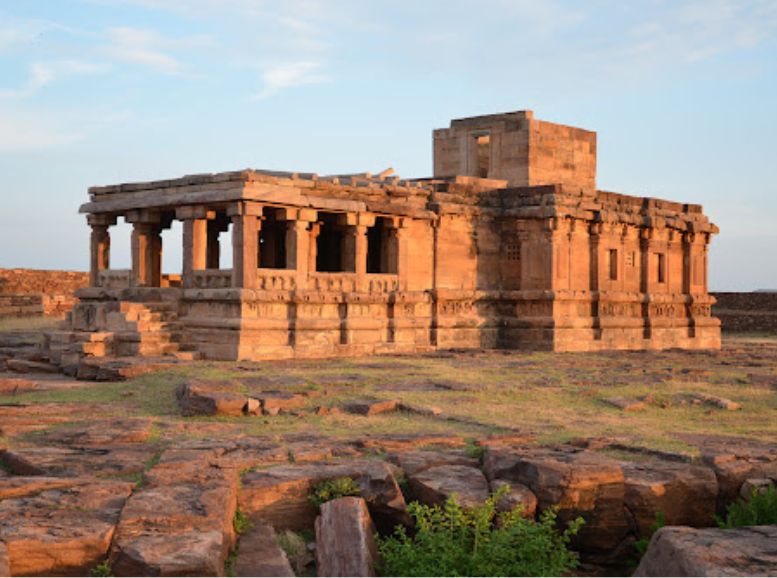
Crowned atop a scenic hill, the Meguti Jain Temple reigns as a significant landmark, both religiously and architecturally. Dating back to the 7th century, it stands as one of the few remaining Jain temples in Aihole. The temple’s architectural style embodies the Digambara tradition, known for its simplicity and elegance. Flat roofs and unadorned walls define its exterior. Step inside the sanctum to find an idol of Lord Parshvanatha, the 23rd Jain Tirthankara, revered by followers of Jainism. Beyond its religious significance, the Meguti Jain Temple offers an unparalleled experience. Ascend the hill and be rewarded with breathtaking panoramic vistas of the surrounding landscapes, making it a truly serene and uplifting destination for all visitors.
Aihole Archaeological Museum:
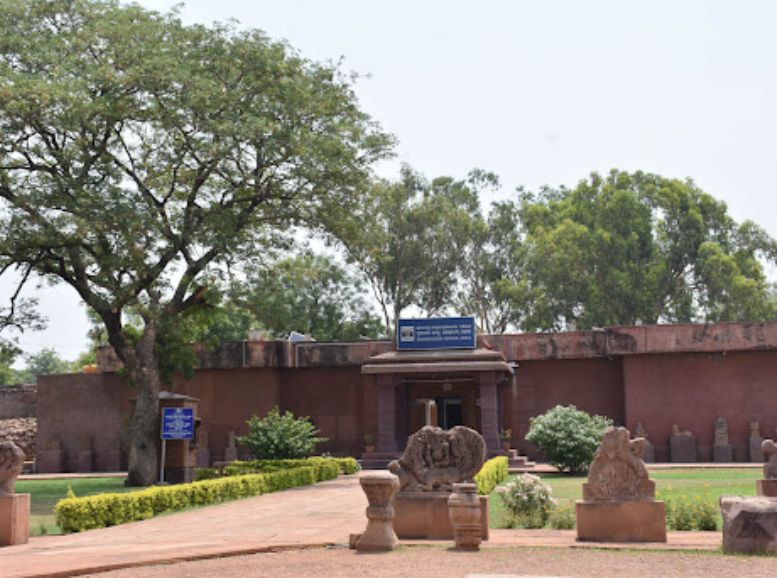
Step back in time at the Aihole Archaeological Museum, housed within a restored historical structure. This treasure trove showcases a captivating collection of artifacts, sculptures, and inscriptions dating back to the Chalukya dynasty. Intricately carved stone sculptures, ancient coins, and pottery whisper tales of Aihole’s rich history, art, and culture. The museum’s exhibits allow you to explore the fascinating evolution of Chalukyan architecture and iconography. Gain a deeper appreciation for Aihole’s significance as a center of early Hindu and Jain culture in Karnataka through this enriching exploration.
Pattadakal Attractions:
Virupaksha Temple:
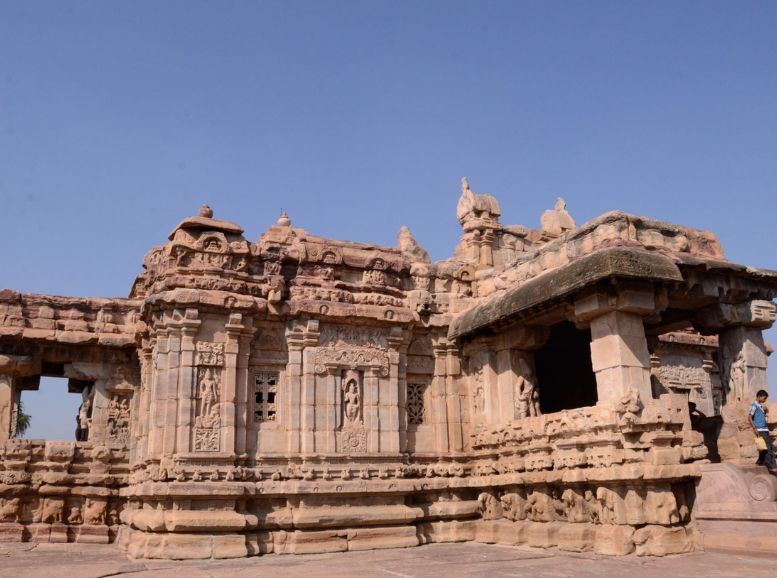
Standing tall amidst the UNESCO World Heritage Site of Pattadakal, the Virupaksha Temple reigns supreme. Dedicated to Lord Shiva, it’s the largest and most elaborate monument here, a testament to the peak of Chalukyan architectural prowess built in the 8th century.
Towering superstructures, intricate carvings, and a wealth of sculptures grace the temple. These sculptures come alive, depicting scenes from Hindu mythology, transporting you to the heart of the Ramayana and Mahabharata. The imposing gateway, known as the “Kasivisvesvara Hall,” sets the stage for your grand entrance. Exquisite sculptures adorn this gateway, hinting at the magnificence that awaits within the Virupaksha Temple complex.
Mallikarjuna Temple:
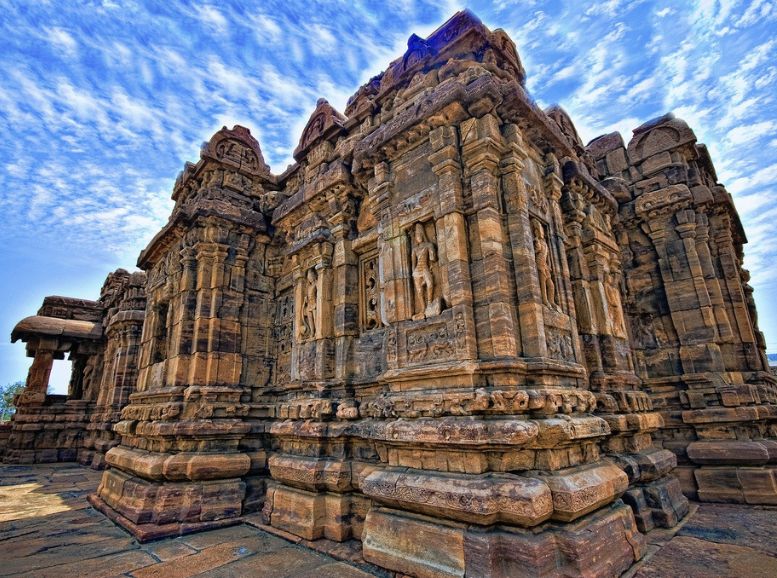
Standing alongside the Virupaksha Temple, the Mallikarjuna Temple is another architectural gem in Pattadakal’s UNESCO World Heritage Site. Dedicated to Lord Shiva, this 8th-century marvel showcases the mastery of Chalukyan artistry.
The temple exemplifies the Dravidian architectural style, featuring a towering vimana, the pyramid-shaped structure above the sanctum. This vimana is adorned with intricate carvings and sculptures, creating a captivating visual narrative. Step inside the sanctum to find a revered Shiva lingam. The outer walls come alive with a visual tapestry of reliefs depicting various deities, celestial beings, and mythological scenes. The Mallikarjuna Temple’s architectural grandeur and historical significance solidify its place as a must-visit for art and architecture enthusiasts.
Sangameshwara Temple:
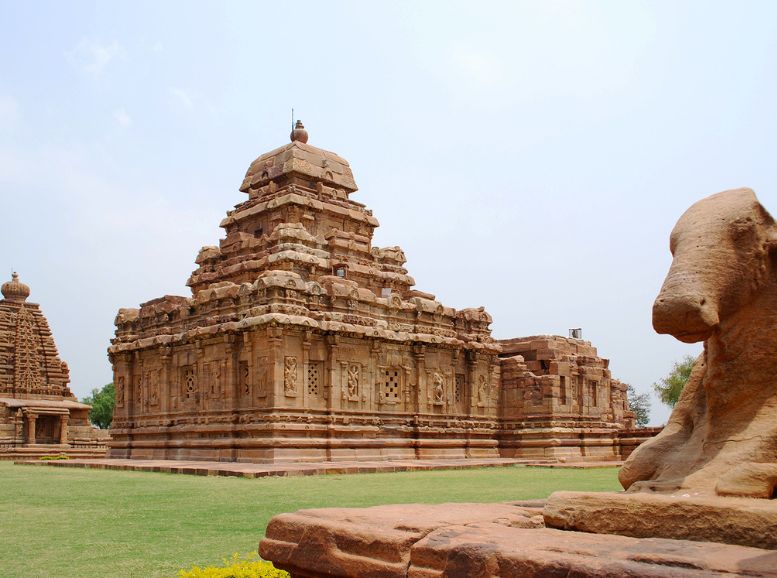
Pattadakal’s architectural tapestry is further enriched by the 8th-century Sangameshwara Temple, renowned for its unique blend of North and South Indian styles. This harmonious fusion reflects the cultural exchange that thrived during the Chalukyan era. Dedicated to Lord Shiva, the temple features a sanctum housing a revered Shiva lingam. Step outside and be captivated by the outer walls adorned with finely sculpted panels. These panels come alive, depicting scenes from Hindu mythology and the royal court, offering a glimpse into the past. The Sangameshwara Temple’s architectural uniqueness and historical significance solidify its place as a captivating landmark for visitors exploring the rich heritage of Pattadakal.
Papanatha Temple:
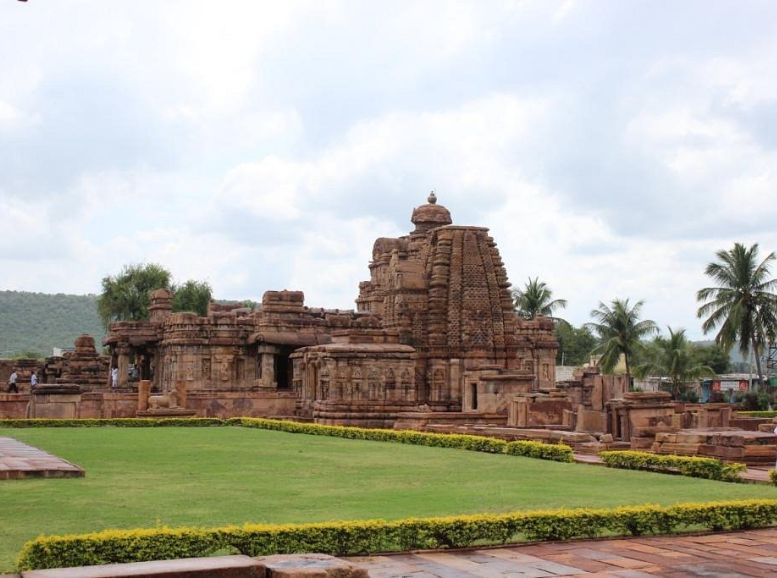
Pattadakal’s architectural journey unfolds further at the Papanatha Temple. Dedicated to Lord Shiva and built in the 7th century, this temple serves as a bridge between artistic eras. It showcases a fascinating fusion of Dravidian and Nagara styles, reflecting the evolving architectural trends under the Chalukyan reign. The sanctum houses a revered Shiva lingam, while the outer walls come alive with intricate carvings depicting deities, mythical creatures, and celestial beings. The Papanatha Temple’s architectural elegance and sculptural richness solidify its place as a must-see landmark within the Pattadakal temple complex.
Jain Temples, Aihole and Pattadakal:
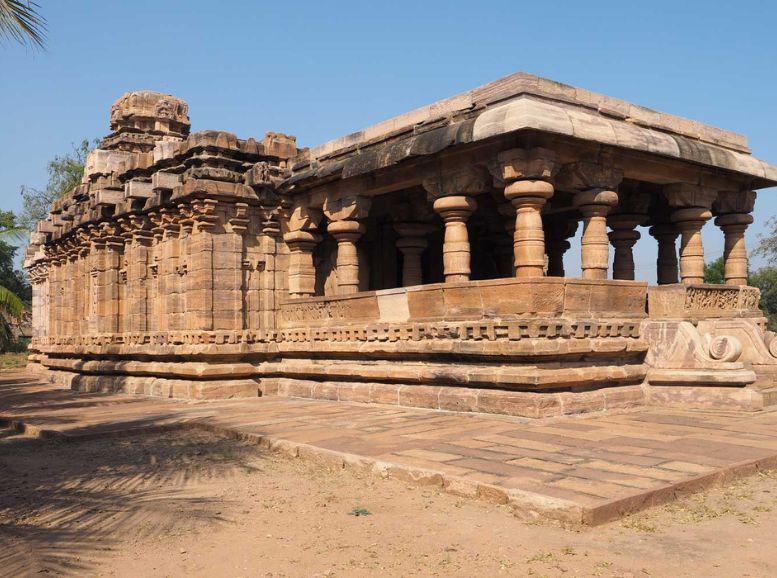
Beyond the magnificent Hindu temples, Pattadakal unveils a fascinating facet of its history with its Jain shrines. The Jambulinga Temple and Chandrashekhara Temple stand as testaments to the region’s religious and cultural diversity. Adorned with intricate carvings, sculptural embellishments, and ornate pillars, these temples showcase the rich artistic heritage of Jainism in Karnataka. Exploring these serene sanctuaries filled with intricate craftsmanship allows visitors to immerse themselves in the captivating cultural mosaic that defines Pattadakal.
Local Experiences:
Aihole: A Village Experience
- Village Stroll: Wander through the charming lanes of Aihole, interacting with friendly locals and soaking in the rural essence of Karnataka. Witness daily activities like pottery-making, weaving, and farming, gaining a deeper understanding of the local way of life.
- Cultural Performances: Immerse yourself in Aihole’s vibrant culture by attending traditional music and dance performances. From the classical melodies of Carnatic music to the lively folk dances of Yakshagana and Dollu Kunitha, these events showcase the region’s rich heritage.
- Culinary Delights: Embark on a culinary adventure by indulging in authentic Kannadiga cuisine at local eateries and stalls. Savor traditional dishes like Jolada Roti, Enne Badanekai, and Obbattu, tantalizing your taste buds with the unique flavors of Karnataka.
Pattadakal: A Journey Through Time
- Village Environs: Explore the serene landscapes around Pattadakal, where lush green fields and traditional mud-brick houses create a timeless ambiance. Engage with locals, learn about their way of life, and capture the rustic beauty of rural Karnataka through your lens.
- Heritage Walks: Join a guided heritage walk led by knowledgeable locals or experts. Uncover hidden gems, architectural wonders, and fascinating stories about Pattadakal’s rich history and cultural heritage.
- Supporting Local Artisans: Browse the vibrant markets and handicraft stalls, where artisans showcase their exquisite creations. Purchase souvenirs like handwoven sarees, wooden carvings, brassware, and pottery, supporting local craftsmanship and preserving traditional art forms.
- Witnessing a Ceremony: If fortunate, you might encounter a traditional religious ceremony or festival at one of Pattadakal’s temples. Immerse yourself in the spiritual atmosphere, observe ancient rituals, and witness the devotion of the local people, offering a glimpse into the region’s religious spirit and cultural traditions.
Travel tips:
Planning is Key:
- Research beforehand! Look into opening hours, entry fees, and any festivals or events happening during your visit. A little planning ensures you make the most of your time and avoid surprises.
Comfort First:
- Pack for exploration! Aihole and Pattadakal involve walking, so choose lightweight, breathable clothing and comfortable walking shoes.
Be Prepared:
- Stay hydrated and well-fueled. Carry plenty of water and snacks, especially if you plan to spend a significant amount of time exploring. Local food options might be limited.
Respect the Culture:
- Dress modestly when visiting temples. Remove your shoes before entering the sanctum. Be mindful of local customs, such as covering your head or maintaining silence in sacred areas.
Sun Smarts:
- Aihole and Pattadakal can get hot, especially in summer. Protect yourself with sunscreen, sunglasses, and a wide-brimmed hat.
Safety Matters:
- While generally safe, stay vigilant, especially in crowded areas. Keep your belongings secure and avoid displaying valuables openly.
Local Knowledge:
- Consider hiring a local guide. They can provide deeper insights into the history, architecture, and significance of the sites, enriching your experience.
Sustainable Travel:
- Be a responsible tourist! Avoid littering, respect signage and pathways, and refrain from touching or damaging the ancient structures and carvings.
Stay Informed:
- Carry a map and keep your phone charged. Familiarize yourself with emergency contact information and nearby amenities in case of need.
Capture the Moment:
- Take photos to cherish your memories, but do so responsibly. Avoid flash photography inside temples and refrain from climbing on or touching delicate structures.
Conclusion
Unveiling the timeless charm of Aihole and Pattadakal, these captivating towns transcend mere historical sites, serving as vibrant testaments to Karnataka’s cultural heritage and architectural mastery. Explore mesmerizing temples, decipher intricate carvings like those adorning the Durga Temple, and be awestruck by the grandeur of the Virupaksha Temple. Immerse yourself in the serenity, connect with the past, and savor local delicacies – each moment a step towards understanding the region’s rich tapestry. As we depart, memories linger, reminding us to preserve these cultural treasures. Let Xplro.com be your guide to plan your unforgettable Aihole and Pattadakal adventure.
FAQs
What makes Aihole and Pattadakal significant destinations in Karnataka?
- Aihole and Pattadakal are renowned for their ancient temples and monuments, which showcase the architectural and cultural heritage of Karnataka. They are considered significant centers of early Chalukyan art and architecture.
How far are Aihole and Pattadakal from each other?
- Aihole and Pattadakal are located approximately 15 kilometers apart in the Bagalkot district of Karnataka, making them easily accessible to visitors who wish to explore both destinations.
What is the best time to visit Aihole and Pattadakal?
- The best time to visit Aihole and Pattadakal is during the winter months, from October to February, when the weather is pleasant and suitable for sightseeing.
Are there any entry fees for visiting the temples in Aihole and Pattadakal?
Yes, some temples in Aihole and Pattadakal may have entry fees for visitors. It is advisable to check the specific fees for each temple before planning your visit.
Are guided tours available in Aihole and Pattadakal?
- Yes, guided tours led by knowledgeable local guides are available in Aihole and Pattadakal. These tours offer insights into the history, architecture, and significance of the temples and monuments.
Is photography allowed inside the temples in Aihole and Pattadakal?
- Photography is generally allowed inside the temples in Aihole and Pattadakal, but there may be restrictions in certain areas or temples. It is advisable to respect any signage or guidelines provided at the site.
Are there any accommodations available in Aihole and Pattadakal?
- Yes, there are a few guesthouses, hotels, and homestays available in Aihole and Pattadakal for visitors looking to stay overnight. It is recommended to book accommodation in advance, especially during the peak tourist season.
What are some nearby attractions to visit along with Aihole and Pattadakal?
- Nearby attractions include Badami, known for its rock-cut cave temples, and Banashankari Temple, dedicated to the goddess Banashankari. These sites are within a short distance from Aihole and Pattadakal and can be visited on the same trip.
Is there public transportation available to reach Aihole and Pattadakal?
- Yes, public buses and private taxis are available from nearby cities and towns to reach Aihole and Pattadakal. Visitors can also hire taxis or use their vehicles for transportation within the region.
Are there any dining options available in Aihole and Pattadakal?
- Yes, there are a few restaurants and eateries serving local cuisine and snacks in Aihole and Pattadakal. Visitors can try traditional dishes like Jolada Roti, Enne Badanekai, and Obbattu at these establishments.
Are Aihole and Pattadakal family-friendly destinations?
- Yes, Aihole and Pattadakal are family-friendly destinations suitable for visitors of all ages. Families can explore the temples, enjoy picnics in the surrounding areas, and participate in cultural activities together.
How long does it take to explore Aihole and Pattadakal thoroughly?
- The time required to explore Aihole and Pattadakal thoroughly depends on individual preferences and interests. On average, visitors spend a day or two exploring the temples and monuments in both destinations.





